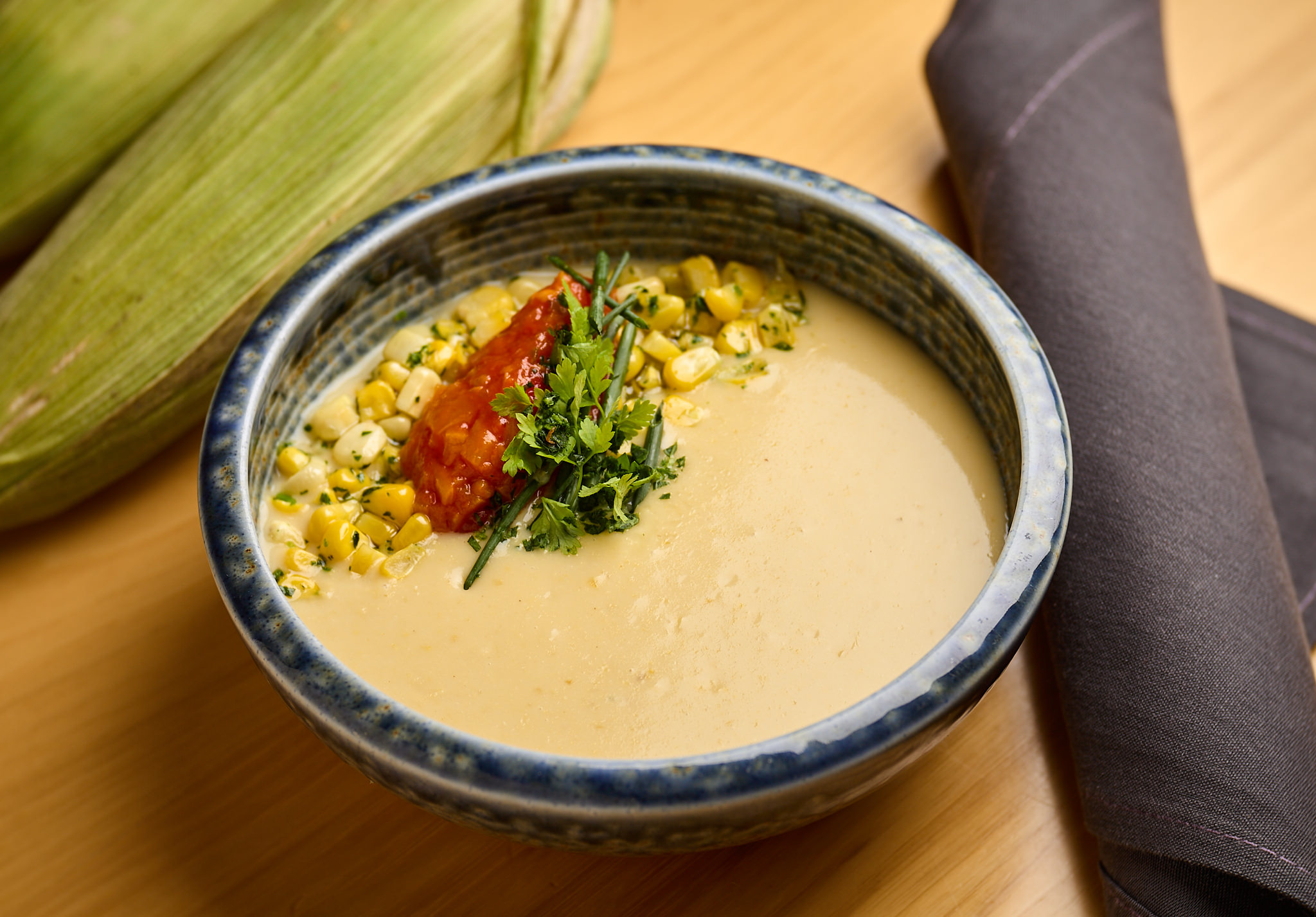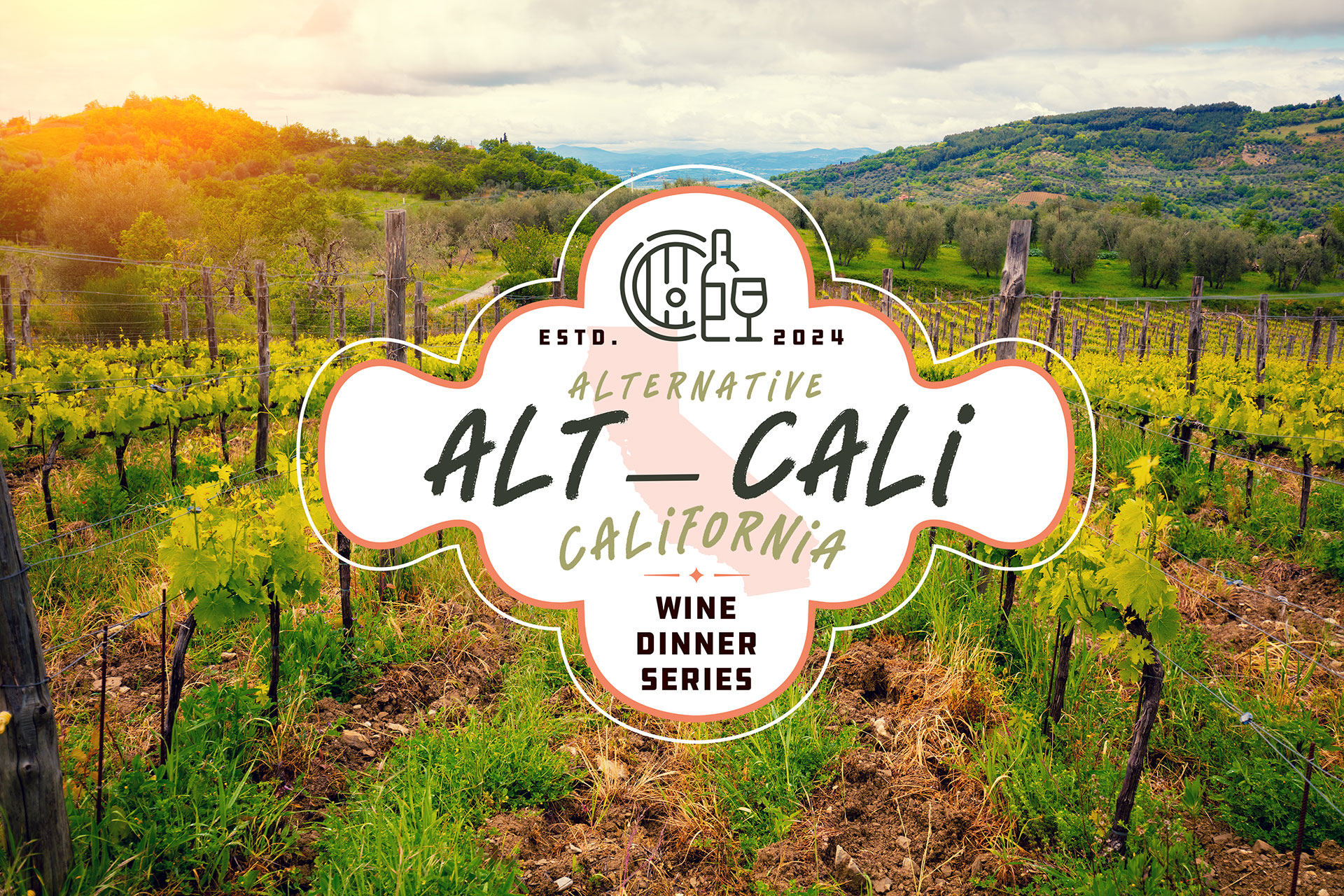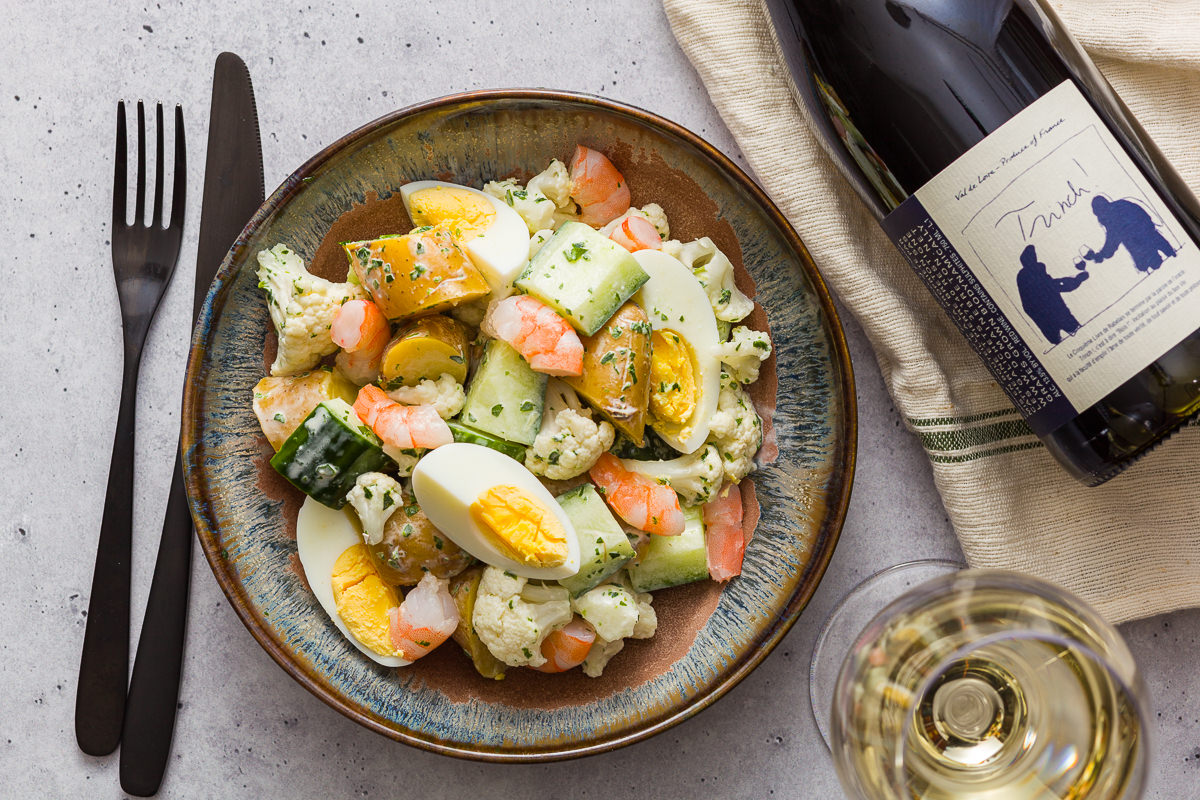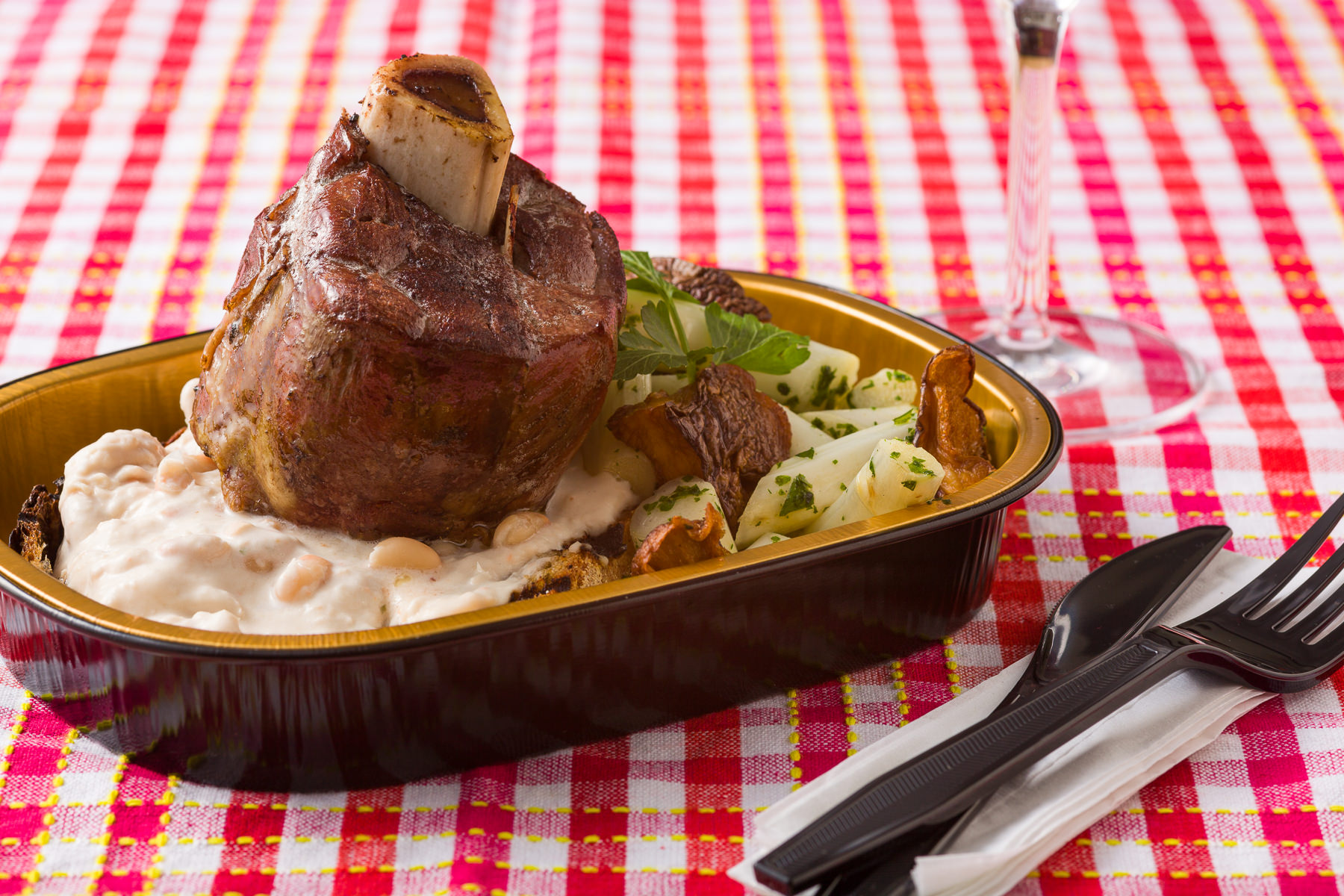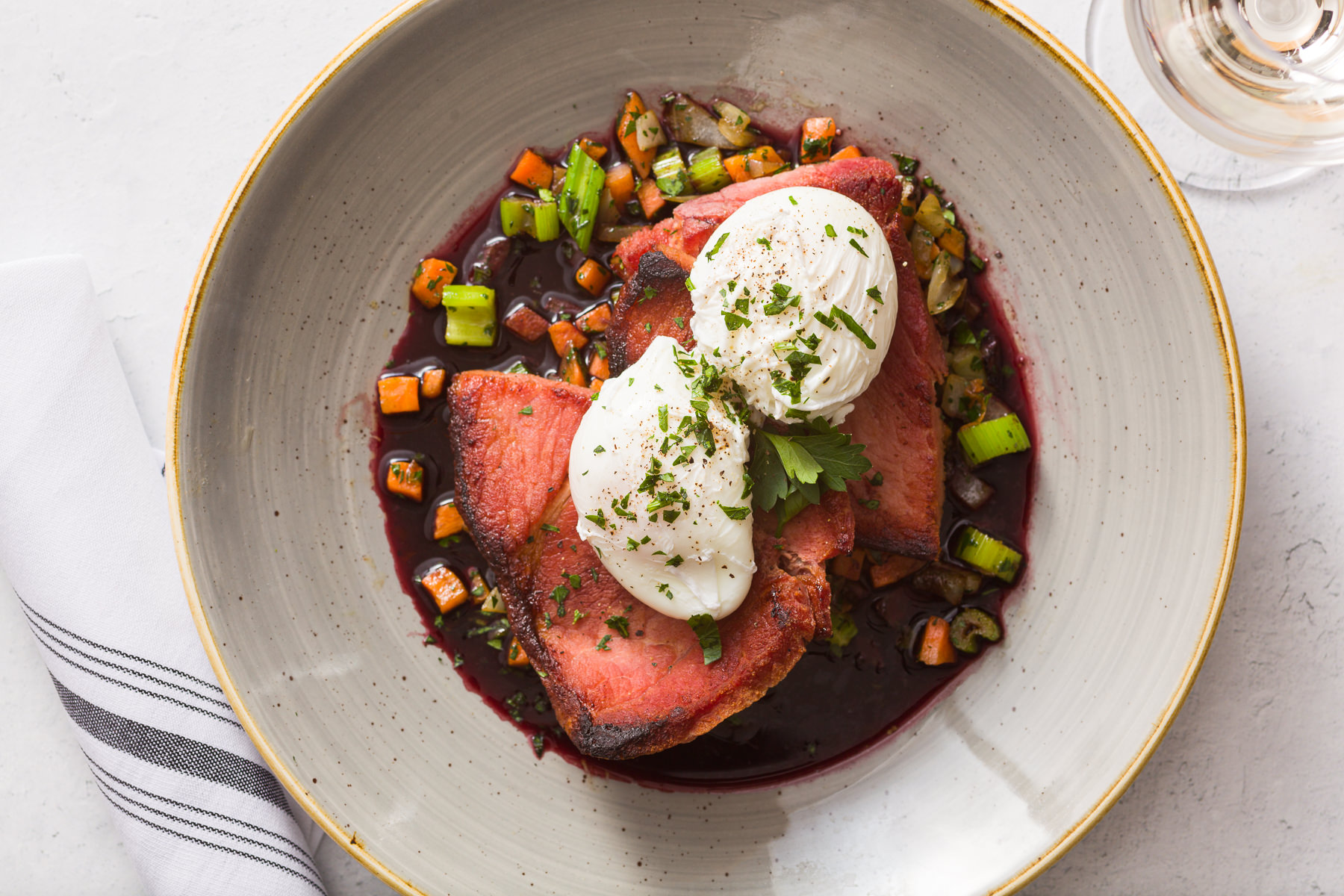
This week for Pays de Loire, Cadre is presenting a wild game-focused menu to represent the regions of Maine, Anjou, and the Vendéen bocage of the Middle Loire. This swath of land runs perpendicular to the Atlantic Coast from Chartres to Angers along tributaries of the Loire and is heavily influenced by the ancient hunting grounds and nature parks of the region.
Despite the richness and novelty of its dishes to outsiders, the cuisine of Pays de Loire comes from modest means. Produce from the hard work of farmers and gardeners is supplemented by foraged (or poached) ingredients from the surrounding woodland and rivers. Described as a “paradise of dining in tranquillity…a land of lark and honey.” Pays de Loire captivates with common sense.
Petits Pois à la Crème
Horticulture is common in the Loire region, which is sometimes known as “The Garden of France”. Of course, this first conjures up images of ornamental French gardens surrounding one of many massive grand châteaux. But every humble farmer would have their own gardens too. Therefore, a perfect dish to encapsulate the region is a simple side of creamed peas. These would be boiled in a pot over a low fire with a plate of cold water on top of the pot, to cool and condense the steam, keeping the peas moist and tender. For this dish, Cadre is sourcing from Driftless Organics in Veroqua who put by peas from the 2020 season. We are also using Sassy Cow cream and a bit of grated Wisconsin parmesan from Sartori. Finally, we are offering the dish “à La Française” with bits of bacon lardons or pearl onions.
Rillette aux Fouée
Pork shows up elsewhere in the Loire in rillettes and rillons, specialties of the region, especially in Le Mans, Tours, and Angers. These dishes are essentially confited pork (meat and fat cooked together in a pot) with salt, pepper, and a little spice until tender. Rillons use cubes of pork and are cooked only until just tender, whereas rillettes are cooked to fall-apart softness and shredded. Because of the high gelatine content and storage in a closed pot, rillettes and rillons are a classic way of preserving meat from spoilage by contact with air. These are enjoyed at all meals of the day, but a bit spread on bread with a glass of white wine would be a common farmers’ breakfast.
This dish was also inspired by another item from the region: Fouée bread. Similar to tarte flambée, fouée was invented as a way of testing the temperature of an oven. A flat piece of dough would be placed in the ashes of a wood-fired oven to bake, and in the case of fouée it would puff up leaving a “pita bread” like a pocket to fill with goat’s cheese, salad, or rillette. This type of dish is especially popular in the area of Saumur where there are many wood-fired brick ovens carved out of the tuffeau limestone caves. This dish is an homage to the region and some other classic dishes by using a pork rillette with peppery arugula tossed in walnut oil and prunes rehydrated in local Saumur Cabernet Franc. Another fun side note on this last inclusion is that the city of Tours in this region gets its name from the “towers” used to dry and store prunes over winter.
Éperlan Frites
Small fried fish (petite friture) or strips of larger fish (goujonettes) are a fixture in the river cafés of the Loire. Coincidentally smelt (known as éperlan in France) is one of the most popular choices because it is able to be caught in quantity using nets. The added bonus to featuring this dish was the strong association with seasonal fish fries and charitable events in Wisconsin, known as Smelt Feeds. We’re serving this dish with a classic rémoulade and caper berries. We would also recommend pairing it with a glass of sparkling crémant from Loire or a rich, crisp white wine like Anjou Blanc.
Soupe Solognote au Lapin
When garden vegetables or fresh fish were not enough, it was well known in the Loire that peasants would risk venturing into the hunting preserves of local aristocrats searching for game. Upon finding this rabbit and mushroom soup recipe from the Solonge, we were at first surprised to find very little rabbit while scanning the recipe. With further research, we learned that it is based on a “poacher’s stew” where game animals could be hidden from a cursory inspection. The recipe involves braising rabbit then mashing it into a paste with mortar & pestle and returning it to the soup to thicken the broth, hiding any larger pieces underneath foraged wild mushrooms and garden vegetables. For this dish, we used rabbit carcasses to make a concentrated rabbit broth for a soup with wild mushrooms and mirepoix. This is then garnished with fricasséed rabbit (since we have nothing to hide) and fines herbes.
Civet de Cerf aux Mogettes
It would perhaps be unlikely that a poacher would get away with a whole deer easily, however, the opportunity came up to purchase some farm-raised venison shanks and we jumped at the chance. One fun linguistic note on the word “venison” is that it comes from a Latin word, venari (to hunt or pursue) and it entered English by way of the Norman word, venison (to describe game meat). English game preserves, which we associate with places like Robin Hood and the Sherwood Forest are a direct replication of the preserves found in Norman France including the Loire. For this meal, we are serving bone-in cerf (deer venison) braised in a red wine jus and served on another, more humble ingredient, Mogette beans.
These flat, white haricot blancs are similar to the common navy bean. In France, Mogettes are a specialty of the Vendée region in the Loire where they were introduced from South America in the mid-sixteenth century. By the early-1800’s they were considered a heritage product of poor tenant farmers, who would soak the dry beans overnight and then simmer them for hours over a fire, adding water as needed. A standard subsistence meal for these farmers the next morning would be Mogette beans on slices of bread, perhaps with garlic and butter. Thankfully, these diligent farmers received their dues in 2010, when le mogette de Vendée received a protected geographical indication status. We dedicate this meal to them and their pursuit.
Crinière de Lion aux Mogettes
More than simply a vegetarian version of the Cerf aux Mogettes. This substitution of locally cultivated Lion’s Mane mushrooms is meant to honor the remarkable history of mushroom cultivation in the Loire region. As previously mentioned above when discussing the rillettes, Saumur in the Loire is famous for its limestone caves, many of which were carved during the Middle Ages as homes and gathering places (even restaurants!). The dark, humid caves also turned out to be great places to cultivate mushrooms which began in earnest when Frenchmen and father of microbiology, Louis Pasteur discovered a process of propagating sterile mushrooms. Today many Frenchmen in Loire work these caves like miners, taking the utmost care to preserve the microbial health of the caves known as troglodytes.
Crémet d’Anger
The famous French food writer, Brillat-Savarin, once wrote, “A dessert without cheese is like a beauty without an eye.” Upon reading that we were forced to ask: “Why isn’t cheese for dessert a thing in America, especially in Wisconsin?” We don’t have an answer but we do have a dish that works from the region of Loire. In Anger, a popular dessert is a fresh cheese (fromage blanc) whipped with cream and egg white to make a cheese-based custard called Crémet. It is traditionally served with fresh fruit or jam. For this version, we decided to make a fresh, early-spring jam with strawberry, rhubarb, and green cardamom. We’ve also included a special garnish of a Sablé cookie. This classic French shortbread cookie is from the Sarthe region in Loire and we have embellished its batter with a hefty pour of Cointreau orange liqueur which also originates from Anger in Pays de Loire.


